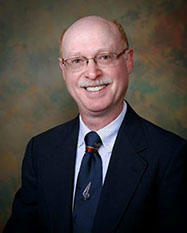On March 23, 2010, President Obama signed into law the Patient Protection and Affordable Care Act (ACA). The intent of the law was to provide health insurance to all Americans while, at the same time, lower the health care costs for the people and the United States government. Although it seems counterintuitive, President Obama promised that the plan would lower the cost of health insurance premiums while at the same time, reduce government spending. It is hard to see how this promise could have been sincere, especially since the plan would have added over 30 million patients into the mix.
I think most would agree that health care in our country is expensive. In 2009, the United States spent 17.3 percent of the gross domestic product (GDP), about $2.5 trillion on health care. This was the most spent for health care by any country in the world. We also spend more than any other country on defense. I think both of these things are good. We should be spending on health care and defense to maintain our way of life which I believe is the best.
Proponents of Health Care change make claims that despite spending more on health care than other countries, the United States lags behind in critical health care measures such as life-expectancy and infant mortality. However, a critical look at these measures shows that the United States is really not so bad.
While it is true that life-expectancy in the United States is less than about 30 other countries, it is likely related to the high homicide rate in America along with the high death rate from auto accidents, both of which are much higher than those found in other Western countries. If we factor out homicides and auto accident fatalities, then the United States has the longest life-expectancy. Homicides and auto related deaths, while concerning, should not count on our quality of health care analysis. (Glen Whitman, “Who’s Fooling Who? The World Health Organization’s Problematic Ranking of Health Care Systems,” CATO Institute, February 28, 2008)
Infant mortality is defined differently depending on the country. Since the definitions differ, it is not surprising that the mortality rates differ. In America, a birth is counted as live if there is any sign of life, regardless of the birth weight or gestational age. This follows the World Health Organization (WHO) definition which defines a live birth as one where the infant, removed from the mother, “breathes or shows any other evidence of life such as beating of the heart, pulsation of the umbilical cord, or definite movement of voluntary muscles.” (Geneva Foundation for Medical Education and Research, Live Birth Definition)
In Switzerland, the baby must be at least 30 centimeters long at birth to be counted as a live birth (David Hogberg, Ph.D., “Don’t Fall Prey to Propaganda: Life Expectancy and Infant Mortality are Unreliable Measures for Comparing the U.S. Health Care System to Others,” National Policy Analysis, July 2006). Even if it’s breathing and the heart is beating, a subsequent death will not be counted as an infant mortality in that country if the baby is shorter than 30 centimeters.
In France, there must be a medical certificate stating that the baby was born alive and viable. Without that certificate, a subsequent death will not count as an infant mortality. Also, in France and Belgium, babies born before twenty-six weeks are counted as deaths even if they fit the WHO criteria for live birth. (Bernadine Healy, “Behind the Baby Count.” US News and World Report, September 24, 2006) It’s obvious that using infant mortality rates as a measure of quality health care is a disingenuous argument for those claiming our health care system is not so good.
I believe that the cost of our health care is reasonable for what we get. It is the best health care in the world. Many of our treatments lead the way for both cure and palliation. Cancer treatments, Human Immunodeficiency Virus (HIV) care, and cardiac and vascular surgery advances are the best in the world. When Russian President Boris Yeltsin needed heart surgery, they sent for Dr. DeBakey’s team from Baylor in Houston.
It is not unusual for other world leaders to send their families or themselves to our country for their own care. When I was a resident at the University of Chicago, it was not unusual for world leaders to take over a hospital floor while they were cared for at that facility. I was even reprimanded by the United States Secret Service when I mistakenly entered the area during one of my rounds.
Former Vice-President Cheney had a left ventricular assist device keeping him alive for quite a while until he was able to get a match for a heart transplant. He spoke to one of our surgical societies where he described his course. He was doing great and I could not see any detrimental effects of his prolonged illness. This type of care is available to all in the United States!
As a Cardiothoracic surgeon, I am frequently exposed to dangerous blood borne infections such as Hepatitis C and Human Immunodeficiency Virus (HIV). I was most fearful of Hepatitis C for which, until recently, there was no good treatment and the resulting death was from fulminant liver failure—not a pleasant way to go.
Now, there is a new drug, Sovaldi (sofosbuvir), to treat Hepatitis C and it is curative. It costs $80 thousand for a course of therapy but the illness would otherwise lead to death or to a liver transplant and further immunosuppressive drug therapy the costs of which would exceed the pills. It makes sense to use this new class of drugs but there is an on-going debate that the drug manufacturers are gouging the public. It is a breakthrough therapy where the developers are being chastised instead of honored. What a shame.
The high cost of drugs reminds me of when I was a young resident and surgeon. Tissue plasminogen activators (tPA) and other clot busters were being introduced as a way to treat patients with myocardial infarctions. The drug was expensive; over $2 thousand to save a heart attack victim. This was deemed exorbitant in the 1980’s. Now it is the standard of care and no one is complaining about the costs.
Drug companies spend millions of dollars on research and development of new therapies and they take a huge financial loss for the drugs that do not pan out. However, when they do have a success like with Hepatitis C, then I don’t have a problem with them charging high rates. This sends the right message to those involved in research and development that what they are doing will be rewarded if they are successful. We want the researchers to be advancing the science of medicine and this is the way to do it.
New endovascular techniques are allowing high risk patients to undergo complex aortic repairs and even aortic valve replacements. These patients would not have tolerated the difficult open procedures that would have been required in the past. With new aortic valves and aortas, many of these otherwise healthy individuals may live for another 10 or 20 years and the lives will be meaningful. Who wouldn’t want that?
…if you think research is expensive, try disease.’ Sure it’s expensive, but life and health are among the most precious things we have. Who wouldn’t spend what is necessary to save a loved one or themselves?
Mary Lasker was a health activist and philanthropist who raised funds for medical research. She helped found the Lasker Foundation. She has been quoted as saying, “if you think research is expensive, try disease.” Sure it’s expensive, but life and health are among the most precious things we have. Who wouldn’t spend what is necessary to save a loved one or themselves? A Lasker Award is often a harbinger of the Nobel Prize in Medicine as, at least 86 Lasker Award winners have gone on to win the Nobel.
My grandparents used to tell us to get the best doctors if we were sick and the best lawyers if we were confronted with legal problems. You’re looking for the best return on your investment and there is nothing more important than your life and health. It is said that there are problems that money can solve and then there are real problems. Perhaps we are spending more on health care because we are getting the best health care. I am OK with that and I think that most Americans would agree with me.
by Darryl S. Weiman, M.D., J.D.
Professor, Cardiothoracic Surgery, University of Tennessee Health Science Center and Chief of Surgery, VAMC Memphis, TN

